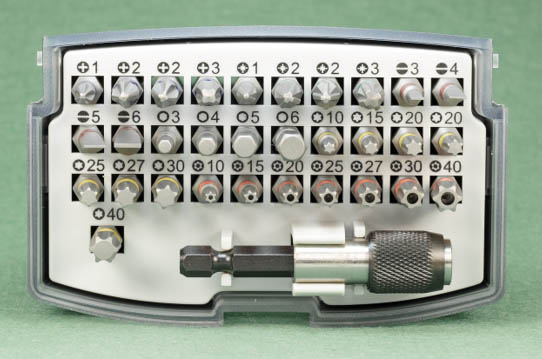Understanding Precision Shim Impact on Differential Backlash
Precision shims, often referred to as axle shims, play a significant role in the functionality of machine components. These thin, flat pieces of material are used to fill small gaps between two objects, thus aligning and levelling machine parts for smooth operation. They are indispensable in fine-tuning machinery and ensuring optimal performance.
On the other hand, differential backlash, also known simply as backlash, is a mechanical term describing the amount of “play” or “slack” in a gear system. This slack, which is the slight movement that can occur when the direction of the gear’s rotation is reversed, is a crucial factor in the operation of many machinery types, particularly automotive.
The relationship between precision shims and differential backlash is intricate and fascinating. A basic understanding of these concepts is vital for anyone involved in machinery manufacturing, repair, or maintenance.
Understanding Differential Backlash
Differential backlash is an important consideration in the design and operation of gear systems. When two gears mesh together, there is typically a small gap between the driving gear’s teeth and the driven gear’s teeth. This gap allows for some degree of movement or “play” when the direction of the gear’s rotation is reversed.
This “play” or slack, while necessary to prevent gear binding and overheating, can lead to issues of inefficiency, noise, and wear if not adequately managed. Excessive backlash can also result in inaccurate positioning in precision machinery, causing significant operational issues.
However, too little backlash can cause problems as well. When the gears have no room to move, they may bind or lock up, causing damage. Therefore, achieving the right amount of backlash is a delicate balance that requires precise adjustment – and this is where the role of precision shims comes into play.
The Role of Precision Shims in Machine Components
Precision shims or axle shims are integral to the functionality of many machine components. They are used to fill small gaps or spaces between parts, ensuring that those parts align correctly and work as intended. This alignment is vital not only for the efficiency of the machine but also for its longevity, as misaligned parts can lead to premature wear and tear.
In the context of gear systems and differential backlash, precision shims are used to adjust the positioning of the gears. By adding or removing shims, technicians can alter the distance between the gear teeth, thereby controlling the amount of backlash.
This precision adjustment is critical in many applications, particularly in automotive differentials where the right amount of backlash ensures smooth operation, minimizes noise and vibration, and prolongs the lifespan of the differential gears.
How Precision Shims Influence Differential Backlash
The influence of precision shims on differential backlash is significant. By adjusting the thickness and placement of the shims, technicians can control the amount of backlash in a gear system. This level of control is crucial for maintaining optimal gear performance.
For example, in a car’s differential, the pinion gear and the ring gear must be precisely aligned. If the alignment is off, it can cause excessive wear, noise, and even gear failure. Precision shims, often in the form of precision thrust washers, are used to adjust the alignment and ensure the proper functioning of the differential.
In essence, precision shims act as a fine-tuning mechanism in gear systems. They allow for the precise adjustment of backlash, ensuring that the system operates smoothly and efficiently.
The Science Behind Precision Shims and Backlash
The science behind precision shims and backlash is fascinating. It revolves around the principles of mechanics and material science. Shims, typically made of metal, plastic, or composite materials, are designed to withstand significant pressure and maintain their shape under load. This durability is crucial for their function in machine components, where they must maintain precise spacing and alignment over time.
The use of shims to control backlash is a practical application of these principles. By adding or removing shims, the distance between the gear teeth can be adjusted to achieve the desired amount of backlash. This adjustment is a delicate process, requiring a deep understanding of the machine’s operation and the effects of various shim thicknesses on backlash.
Impact of Precision Shims on Differential Backlash: Case Studies
Numerous case studies illustrate the significant impact of precision shims on differential backlash. In automotive manufacturing and repair, for example, the correct use of axle shims can dramatically improve the performance and longevity of a vehicle’s differential.
In one notable case, a manufacturer was experiencing significant noise and vibration issues with a new vehicle model. Upon investigation, it was discovered that the differential backlash was outside the acceptable range. By adjusting the axle shims, technicians were able to bring the backlash within the acceptable range, significantly reducing the noise and vibration issues.
Importance of Correct Shimming in Backlash Management
Correct shimming is crucial in backlash management. The wrong shim thickness or placement can result in too much or too little backlash, both of which can lead to operational issues. Therefore, it’s vital for technicians to have a thorough understanding of the machine’s operation and the effects of various shim adjustments on backlash.
Correct shimming not only ensures optimal machine performance but also extends the lifespan of machine components. By maintaining precise alignment and spacing, shims help to minimize wear and tear, thereby prolonging the life of the components.
Tips for Using Precision Shims to Control Differential Backlash
There are several tips for using precision shims to control differential backlash. First, it’s essential to understand the machine’s operation and the effects of various shim adjustments on backlash. This understanding is crucial for making precise adjustments and achieving optimal machine performance.
Second, it’s important to use the right shim material. Different materials have different properties, and the right choice can significantly influence the performance and longevity of the machine components.
Finally, regular inspection and maintenance are vital. Over time, the shims may wear or shift, altering the backlash. Regular inspections can catch these issues early, allowing for timely adjustments and preventing significant operational issues.
Expert Opinions: Precision Shim Impact on Differential Backlash
Experts in the field of mechanics and machinery design agree on the significant impact of precision shims on differential backlash. They emphasize the importance of correct shimming in maintaining optimal machine performance and extending the lifespan of machine components.
Many experts also highlight the importance of regular inspection and maintenance. They note that even with the best shimming practices, wear and tear can still occur over time. Regular inspections and adjustments can help to minimize these issues and ensure the continued smooth operation of the machine.
Precision Shims for Differential Backlash | Michigan
In conclusion, precision shims play a critical role in controlling differential backlash. These thin, flat pieces of material, often referred to as axle shims or precision thrust washers, are integral to the functionality and longevity of many machine components.
By filling small gaps and ensuring precise alignment, shims allow technicians to fine-tune machinery and achieve optimal performance. They are particularly crucial in the management of differential backlash, where the right amount of “play” or “slack” is essential for smooth operation and minimal wear. Understanding the relationship between precision shims and differential backlash is vital for anyone involved in machinery manufacturing, repair, or maintenance. With the right knowledge and practices, one can effectively use shims to control backlash, improve machine performance, and prolong the lifespan of machine components.
Northern Industrial Manufacturing in Southeast Michigan is your turnkey partner for even the most challenging projects. Our experts understand which options work best for your specific material and surface finish requirements, and offer the most advanced technologies to meet the needs of your unique project.
We will bring your parts to market on time – with assistance from prototype to volume production – quickly, affordably and efficiently as possible.
Thank you for visiting our blog where we keep customers updated and informed on the latest processes in automotive parts manufacturing!
Please check back often if you would like to learn more about the world of precision thrust washers, selective shims, spacers, and other automotive parts.




